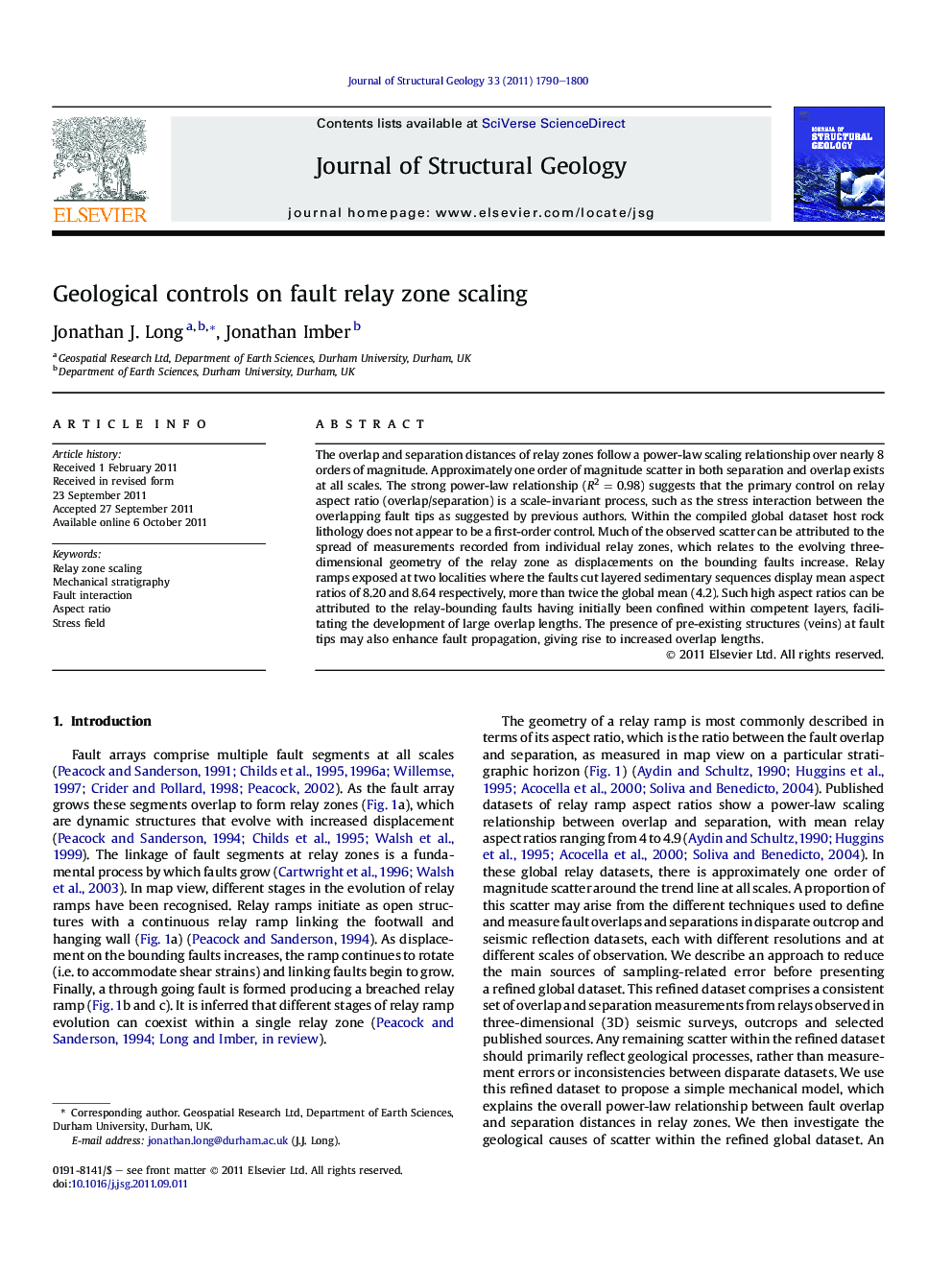| Article ID | Journal | Published Year | Pages | File Type |
|---|---|---|---|---|
| 4733432 | Journal of Structural Geology | 2011 | 11 Pages |
The overlap and separation distances of relay zones follow a power-law scaling relationship over nearly 8 orders of magnitude. Approximately one order of magnitude scatter in both separation and overlap exists at all scales. The strong power-law relationship (R2 = 0.98) suggests that the primary control on relay aspect ratio (overlap/separation) is a scale-invariant process, such as the stress interaction between the overlapping fault tips as suggested by previous authors. Within the compiled global dataset host rock lithology does not appear to be a first-order control. Much of the observed scatter can be attributed to the spread of measurements recorded from individual relay zones, which relates to the evolving three-dimensional geometry of the relay zone as displacements on the bounding faults increase. Relay ramps exposed at two localities where the faults cut layered sedimentary sequences display mean aspect ratios of 8.20 and 8.64 respectively, more than twice the global mean (4.2). Such high aspect ratios can be attributed to the relay-bounding faults having initially been confined within competent layers, facilitating the development of large overlap lengths. The presence of pre-existing structures (veins) at fault tips may also enhance fault propagation, giving rise to increased overlap lengths.
► A consistent technique has been developed to measure relay zone aspect ratios (ARs). ► ARs from 516 relay zones display power-law scaling over 8 orders of magnitude. ► Scatter in the scaling trend results from the inherently 3D geometry of relay zones. ► Power-law scaling can be explained by a simple mechanical model of fault interaction. ► Mechanical layering controls the 3D shape, hence ARs of relay zones.
